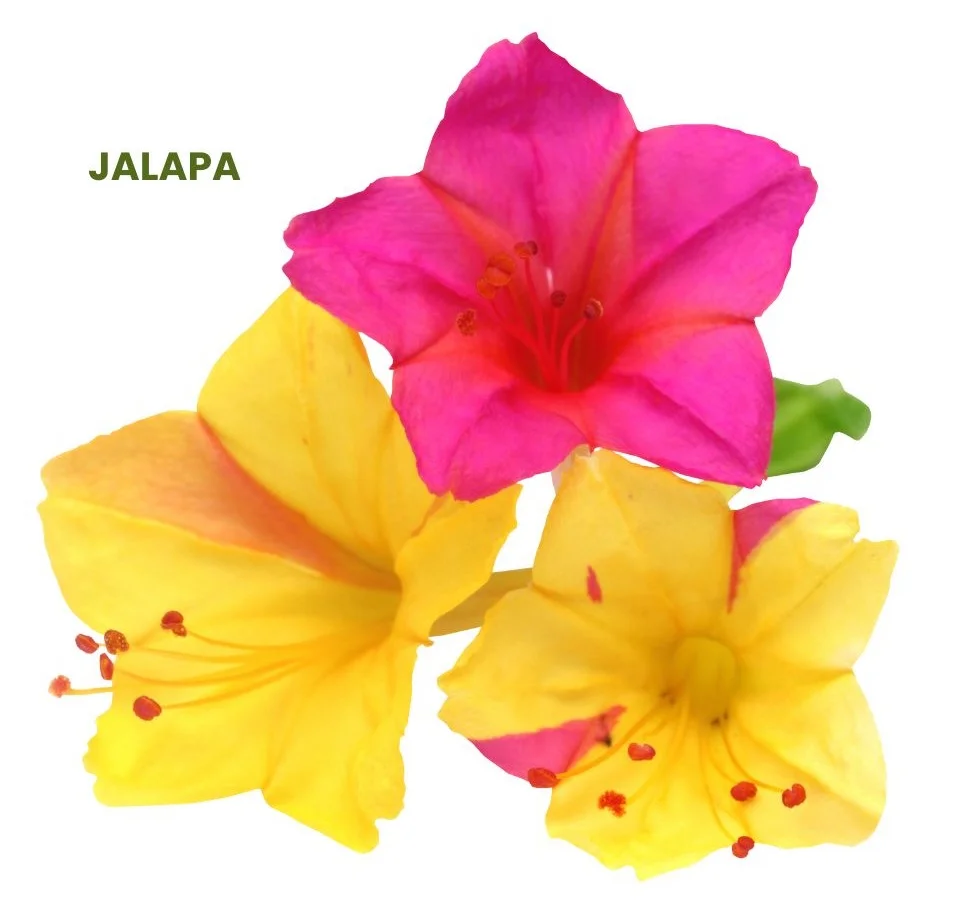Jalapa, derived from the plant Exogonium purga, is primarily known for its action on the gastrointestinal system, especially for treating colic and diarrhea.
It is particularly notable for its effects on children who are well-behaved during the day but become restless and troublesome at night.

Table of Contents
ToggleSOURCE INFORMATION
Scientific Classification
- Family: Convolvulaceae
- Genus: Exogonium
- Species: E. purga
Origin
- Native to Mexico, specifically found in the regions of Veracruz and Jalapa.
- Historically used by indigenous peoples for its potent purgative properties.
Historical Facts
- Jalapa root has been used since ancient times as a powerful laxative.
- Introduced to Europe in the 16th century and became a staple in medicinal treatments for digestive issues.
DRUG PATHOGENESIS
Jalapa acts primarily on the gastrointestinal system, causing and curing symptoms like colic, diarrhea, and abdominal pain.
It is especially useful in conditions where there is distention, flatulence, and a tendency toward watery, muddy stools.
KEY CHARACTERISTICS
- Colic and Diarrhea: Effective in treating colic and diarrhea, particularly in children who are restless at night.
- Gastrointestinal Symptoms: Smooth, glazed tongue; pain in the right hypochondrium; flatulence; pinching and griping pains; watery, muddy stools; distended abdomen.
- Extremities: Aching in arms and legs, pain in large joint of the great toe, burning sensation in the soles, and smarting at the root of the nail.
DETAILED ORGAN SYMPTOMS
GASTROINTESTINAL
- Tongue: Smooth, glazed, dry, and smarting.
- Pain: In the right hypochondrium (upper right part of the abdomen).
- Flatulence: Excessive gas in the digestive tract.
- Nausea: Feeling of sickness with an inclination to vomit.
- Diarrhea: Watery, thin, muddy stools; abdomen distended and anus sore.
EXTREMITIES
- Aching: In arms and legs.
- Joint Pain: Particularly in the large joint of the great toe.
- Smarting: At the root of the nail.
- Burning Sensation: In the soles of the feet.
RELATIONSHIP WITH OTHER DRUGS
Antidotes
- Elaterium (Elater): Used to counteract the effects of Jalapa.
- Cannabis sativa (Cann sat): Another antidote for Jalapa’s adverse effects.
Comparisons
- Camphor (Camph): Compared for its effects on the gastrointestinal system.
- Colocynthis (Colocy): Compared for treating colic and abdominal pains.
DOSE
- Recommended in third to twelfth potency.
Frequently Asked Questions
What conditions can Jalapa treat?
- Jalapa is effective in treating colic, diarrhea, and abdominal pain, especially in children.
How is Jalapa administered?
- It is typically administered in homeopathic potencies, ranging from third to twelfth potency.
Are there any side effects of Jalapa?
- When used in homeopathic doses, side effects are rare, but some individuals may experience mild digestive disturbances.
Meaning of Difficult Words
- Colic: Severe, often fluctuating pain in the abdomen caused by intestinal gas or obstruction in the intestines.
- Hypochondrium: The upper part of the abdomen, just below the ribs.
- Flatulence: The accumulation of gas in the alimentary canal.
- Glazed Tongue: A tongue that appears smooth and shiny, often indicating irritation or inflammation.
- Distended: Swollen due to pressure from inside; bloated.
- Anus: The opening at the end of the digestive tract through which stool leaves the body.
- Smarting: A stinging pain or sensation.
- Purgative: A substance that causes evacuation of the bowels; a strong laxative.
